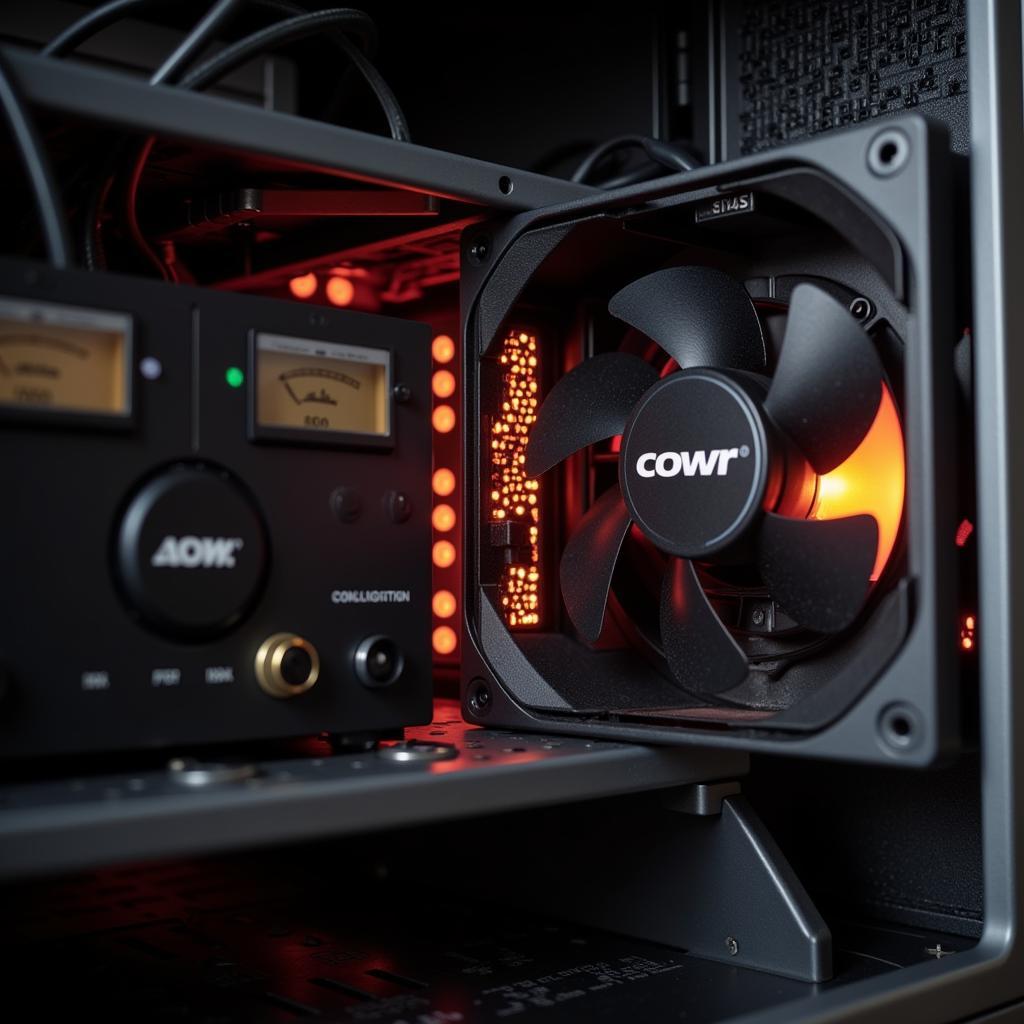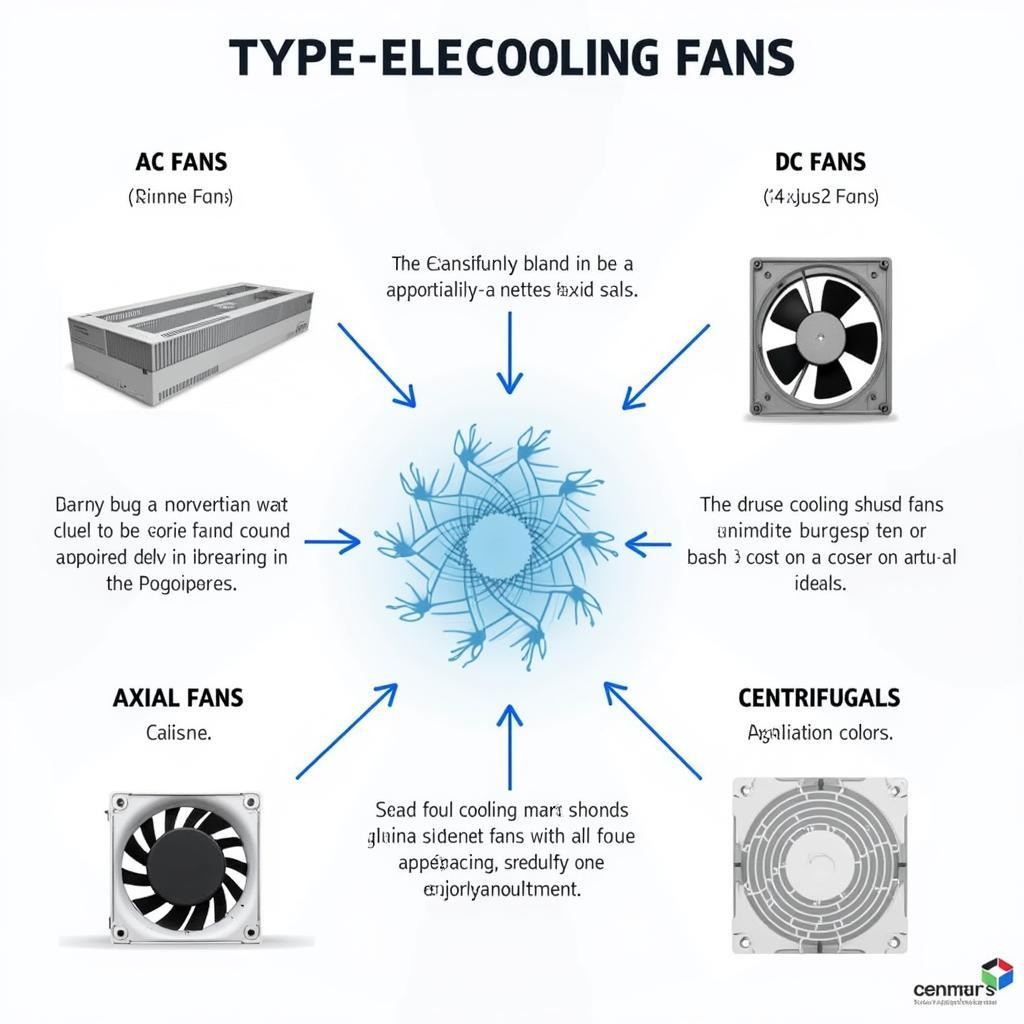Cooling Fans For Electronics Cabinets are essential components for maintaining optimal operating temperatures and preventing overheating. As electronic devices generate heat during operation, effective heat dissipation is crucial for their reliability, performance, and lifespan. Cooling fans provide the necessary airflow to remove heat buildup within enclosed spaces, ensuring the stability and longevity of sensitive electronic equipment.
Understanding the Importance of Cooling Fans in Electronics Cabinets
 Cooling fan installed in an electronics cabinet
Cooling fan installed in an electronics cabinet
Electronic components, especially those found in servers, telecommunications equipment, and industrial control systems, are susceptible to heat damage. Overheating can lead to performance degradation, system crashes, and even permanent hardware failure.
Cooling fans mitigate these risks by actively circulating air within the cabinet. They draw in cooler air from the surrounding environment and expel hot air generated by the equipment. This continuous airflow prevents heat from accumulating and maintains a stable temperature within the cabinet, ensuring optimal operating conditions for the electronics.
Types of Cooling Fans for Electronics Cabinets
 Various types of cooling fans for electronics cabinets
Various types of cooling fans for electronics cabinets
Different applications require specific types of cooling fans. Here are the most common types:
- AC Fans: These fans operate on alternating current (AC) and are commonly used in larger cabinets or applications with higher cooling demands.
- DC Fans: Powered by direct current (DC), these fans are known for their energy efficiency and quiet operation, making them suitable for smaller cabinets and noise-sensitive environments.
- Axial Fans: These fans feature blades that rotate around a central axis, creating airflow parallel to the axis. They are widely used for general-purpose cooling in electronics cabinets.
- Centrifugal Fans (Blowers): These fans utilize a centrifugal force to move air radially, creating a more focused and powerful airflow. They are ideal for applications requiring high air pressure or spot cooling.
Choosing the Right Cooling Fan: Key Considerations
Selecting the appropriate cooling fan involves considering several factors:
- Airflow (CFM): Measured in cubic feet per minute (CFM), airflow indicates the volume of air a fan can move. Higher CFM values generally provide better cooling but may come with increased noise levels.
- Static Pressure (SP): This measurement reflects the fan’s ability to overcome resistance to airflow, such as that created by filters, grills, or obstructions within the cabinet.
- Noise Level (dBA): Measured in decibels (dBA), noise level is an important consideration for noise-sensitive environments.
- Size and Form Factor: Fans come in various sizes and form factors to fit different cabinet dimensions and mounting requirements.
- Operating Voltage and Power Consumption: Ensure the fan’s voltage and power requirements are compatible with your system.
- Bearing Type: Different bearing types offer varying levels of durability, noise, and lifespan.
Installing and Maintaining Cooling Fans
Proper installation and regular maintenance are crucial for optimal cooling performance:
- Determine Fan Placement: Consider the airflow path within the cabinet and position fans strategically to create efficient intake and exhaust.
- Ensure Secure Mounting: Mount fans securely to prevent vibrations and noise.
- Clean Regularly: Dust accumulation on fan blades and vents can hinder airflow and reduce cooling efficiency.
- Inspect for Wear and Tear: Regularly check for signs of wear and tear, such as damaged blades or bearings, and replace fans as needed.
Conclusion
Cooling fans are indispensable for maintaining the reliability and performance of electronic equipment housed in cabinets. By understanding the different types of fans, key considerations for selection, and proper installation and maintenance practices, you can ensure optimal cooling performance and prolong the lifespan of your valuable electronics.
Remember, investing in high-quality cooling fans and implementing a comprehensive thermal management strategy is essential for protecting your electronic investments and ensuring uninterrupted operation.


